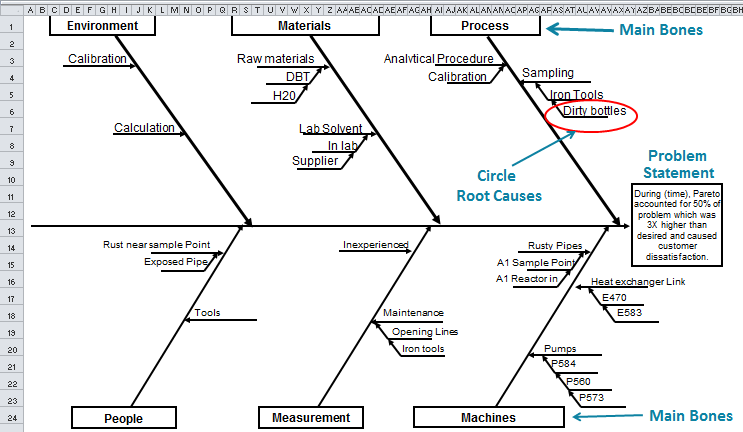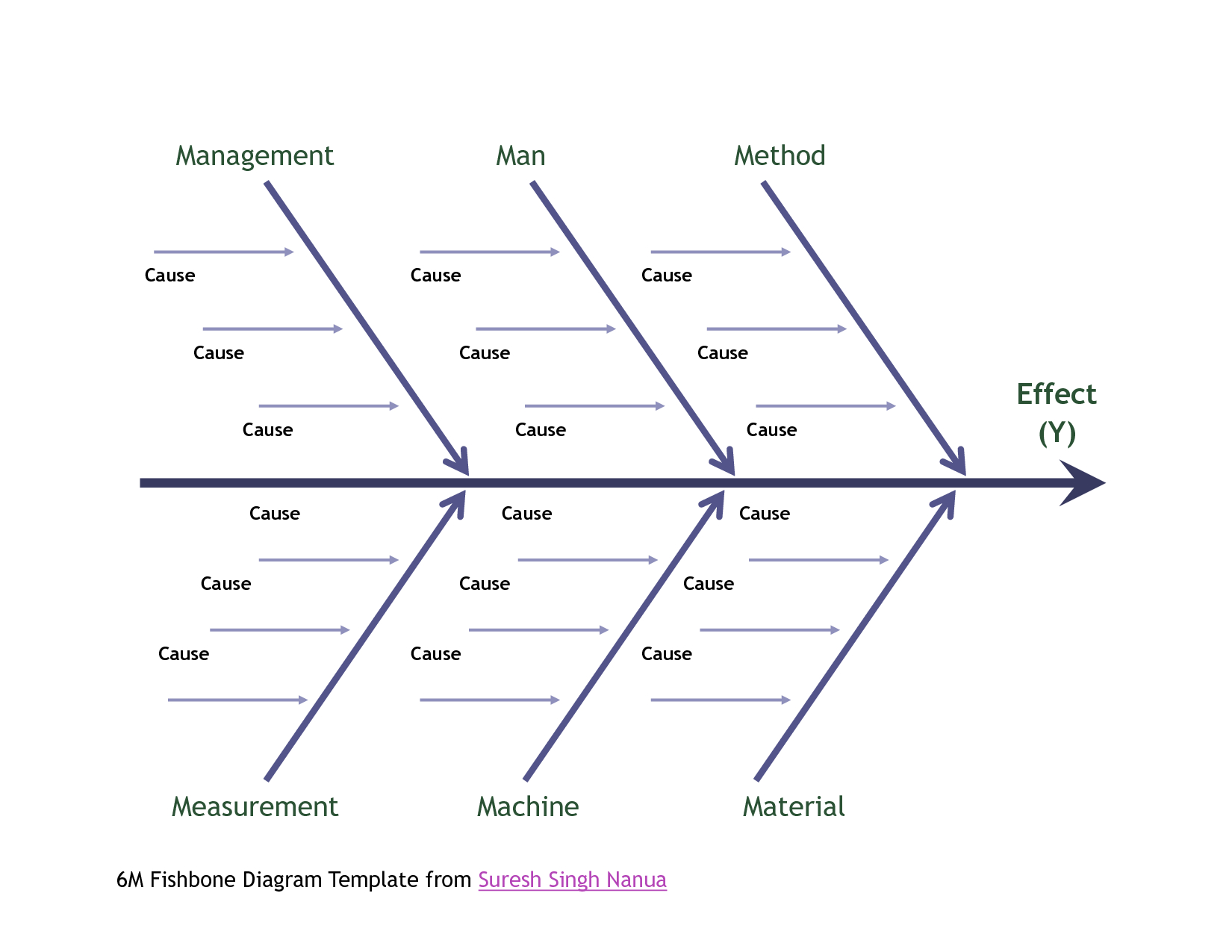Fishbone excel templatelab powerpoint
Table of Contents
Table of Contents
If you’re struggling with identifying the root cause of a problem in your project management, then you should know how to draw a fishbone diagram in Excel. This tool helps break down complex issues into more manageable components, and it’s designed to be user-friendly for all skill levels.
Figuring out how to draw a fishbone diagram in Excel can feel confusing, especially for beginners or those unfamiliar with the software. Many people need guidance on how to create a fishbone diagram with ease, and this can lead to frustration and wasted time when trying to troubleshoot an issue.
The good news is that drawing a fishbone diagram in Excel is easy when you know how to do it. All it takes is a few clicks, and you’ll be on your way to identifying the root cause of your project issues.
Overall, understanding how to draw a fishbone diagram in Excel can be a game-changer for project management, and it’s worth taking the time to learn.
How to Draw a Fishbone Diagram in Excel: A Step-by-Step Guide
First, you’ll need to open Microsoft Excel and create a new worksheet. Once you’ve done this, follow these steps:
- Insert a tab and name it “Fishbone Diagram.”
- Draw the fishbone shape: select the Insert tab from the top menu, click Shapes, and then choose the Chevron or Isosceles Triangle shape.
- Insert a line connecting the middle of the fishbone to the fish’s head.
- Insert lines connecting to the main fishbone, creating primary branches.
- Add your problem statement or effect at the head of the fish.
- Add your causes at the end of the primary branches you created in step four.
- Add sub-causes to the secondary branches by repeating steps four and five.
- Edit the colors or font to make the diagram easier to read.
- Save the worksheet as needed.
Personal Experience with Drawing a Fishbone Diagram in Excel
Before I knew how to draw a fishbone diagram in Excel, a project manager tasked me with identifying the root cause of a product defect. I had no idea where to start! But after learning how to draw a fishbone diagram in Excel, I quickly identified the issue, and the project was back on track.
I’ve since used fishbone diagrams in Excel many times in my career and can attest to their effectiveness as a problem-solving tool.
Benefits of Using Fishbone Diagrams in Excel for Project Management
When you use a fishbone diagram in Excel, you’re able to break down complex issues into more simple and manageable components. This tool can help project managers:
- Identify the root cause of project issues
- Visualize the problem, so it’s easier to communicate to others on the team
- Organize data and related information in a clear and structured way
- Spot interconnected causes that can be challenging to identify otherwise
- Focus on specific areas of the project that require attention
Drawbacks of Using Fishbone Diagrams in Excel for Project Management
While fishbone diagrams in Excel can be an effective problem-solving tool, they do have some shortcomings:
- May not capture all the factors contributing to an issue
- May not reveal how different causes interact with one another
- Can be difficult to create and understand for those not familiar with the process
Tips for Using Fishbone Diagrams in Excel for Project Management
Here are some tips to keep in mind when using fishbone diagrams in Excel for project management:
- Be specific when identifying problem statements
- Focus on creating a logical structure when adding causes to branches
- Be consistent when naming and formatting branches on the diagram
- Use color and font to make the diagram more readable and user-friendly
Frequently Asked Questions About Drawing a Fishbone Diagram in Excel
Q: What is the difference between a fishbone diagram and an Ishikawa diagram?
A: Fishbone diagrams are also called Ishikawa diagrams or cause-and-effect diagrams. They’re all the same and share a common goal of breaking down complex issues into smaller, more manageable components.
Q: Can you create a fishbone diagram in other software besides Excel?
A: Yes! There are many software options for creating fishbone diagrams, including Lucidchart, SmartDraw, and Visio, to name a few.
Q: How many causes should a fishbone diagram have?
A: There is no specific number of causes a fishbone diagram should have. Just make sure you identify as many causes as you can.
Q: Can a fishbone diagram be used in any industry or business?
A: Yes! Fishbone diagrams are versatile and can be used in a wide range of businesses and industries, including healthcare, manufacturing, marketing, and technology.
Conclusion of How to Draw Fishbone Diagram in Excel
When it comes to project management, it’s essential to have the right tools to identify and solve problems. Knowing how to draw a fishbone diagram in Excel is an excellent tool for doing so. By breaking down complex issues into manageable components, project managers can quickly identify root causes and take corrective action. With practice and patience, you’ll be able to create fishbone diagrams in Excel that communicate complex information in a clear and straightforward manner.
Gallery
Fishbone Diagram Template In Excel | Draw Ishikawa Fishbone Diagram

Photo Credit by: bing.com / fishbone ishikawa bone root whys input qimacros
47 Great Fishbone Diagram Templates & Examples [Word, Excel]
![47 Great Fishbone Diagram Templates & Examples [Word, Excel] 47 Great Fishbone Diagram Templates & Examples [Word, Excel]](https://templatelab.com/wp-content/uploads/2017/02/fishbone-diagram-template-12-790x608.jpg)
Photo Credit by: bing.com / fishbone ishikawa templatelab values addictionary downloadable
47 Great Fishbone Diagram Templates & Examples [Word, Excel]
![47 Great Fishbone Diagram Templates & Examples [Word, Excel] 47 Great Fishbone Diagram Templates & Examples [Word, Excel]](https://templatelab.com/wp-content/uploads/2020/07/Fishbone-Diagram-Template-09-TemplateLab.com_-scaled.jpg?w=395)
Photo Credit by: bing.com / fishbone excel templatelab powerpoint
044 Template Ideas Fishbone Diagram Ipbxi231 Unforgettable For Ishikawa

Photo Credit by: bing.com /
47 Great Fishbone Diagram Templates & Examples [Word, Excel]
![47 Great Fishbone Diagram Templates & Examples [Word, Excel] 47 Great Fishbone Diagram Templates & Examples [Word, Excel]](https://templatelab.com/wp-content/uploads/2020/07/Fishbone-Diagram-Template-02-TemplateLab.com_-scaled.jpg?w=395)
Photo Credit by: bing.com / fishbone excel templatelab awful addictionary





